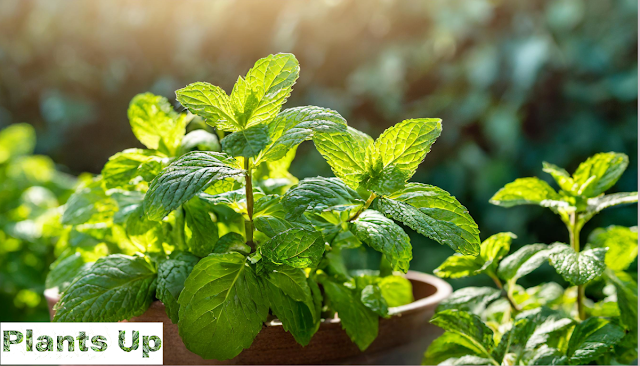 |
| Top 10 Flowering Plants That Will Add Beauty to Your Home |
Flowering plants are a popular choice for home and garden decoration, as they add color, fragrance, and visual interest to any space. Beyond their aesthetic appeal, these plants have numerous benefits for both physical and mental health. Studies have shown that being surrounded by nature, including flowering plants, can reduce stress levels, improve mood, and boost cognitive function. Moreover, certain flowering plants can help purify the air, removing harmful toxins and improving indoor air quality.
In this article, we will explore the top 10 flowering plants that are easy to care for and add beauty and benefits to your home or garden. Whether you're a seasoned gardener or new to plant care, there's sure to be a flowering plant on this list that will suit your needs and
preferences.
1. Rose
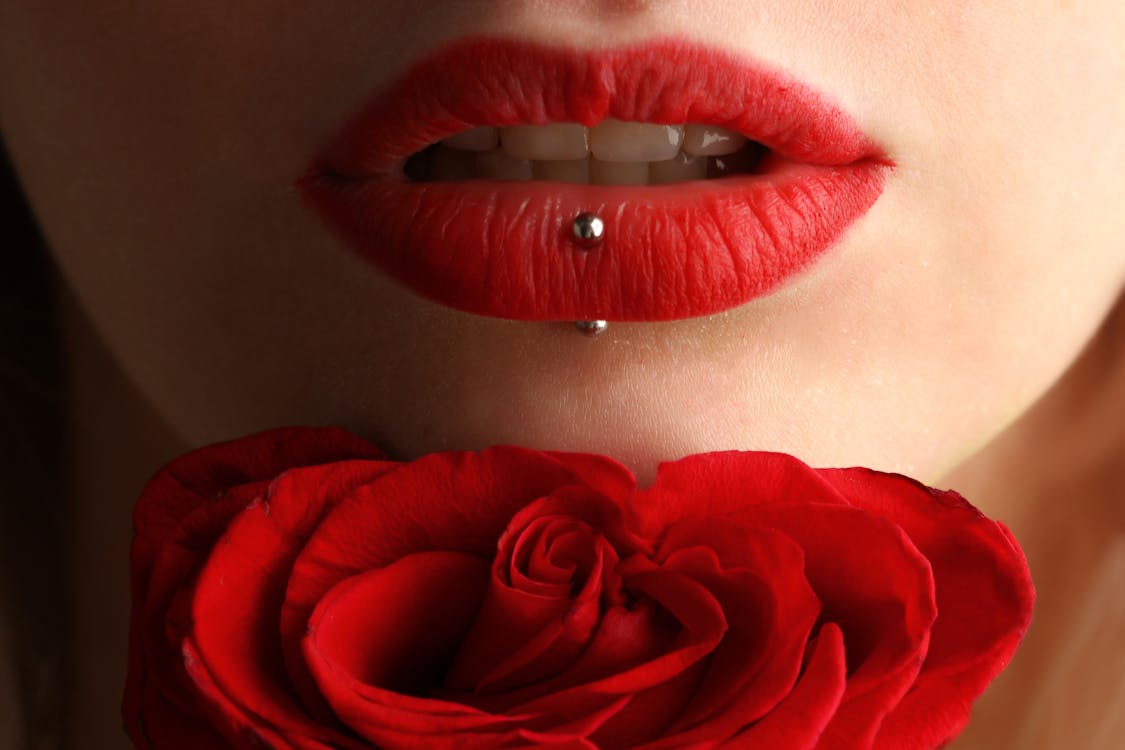 |
| Rose Flower |
Rose is a perennial flowering plant that belongs to the Rosaceae family. It is a woody plant that grows thorny stems and leaves with serrated edges. Roses have been a symbol of love, passion, and beauty since ancient times. They come in various colors, including red, pink, white, yellow, orange, and purple, with each color holding a different meaning. For instance, red roses symbolize love and passion, while pink roses represent grace, admiration, and joy.
Growing roses at home requires a little bit of effort and care. Roses prefer well-draining soil and require at least 6 hours of sunlight daily. They need to be watered regularly, but care should be taken not to overwater them, as this can lead to root rot. Pruning is essential for maintaining the shape of the plant and encouraging new growth. Deadheading the faded blooms promotes continuous blooming throughout the season. Additionally, roses need to be fertilized regularly with a balanced fertilizer to encourage healthy growth and abundant flowering. With proper care, roses can thrive and bloom for years to come.
2. Orchids
 |
| Orchids Flower |
Orchids are elegant and exotic flowering plants that come in a variety of colors, shapes, and sizes. They are native to tropical regions and are well-known for their intricate and delicate blooms. There are over 20,000 species of orchids, each with its unique characteristics.
The most common types of orchids include phalaenopsis, cattleya, dendrobium, and oncidium. Phalaenopsis orchids are also known as moth orchids and are popular for their long-lasting blooms in shades of white, pink, and purple. Cattleya orchids have large, showy blooms in vibrant colors like pink, purple, and yellow. Dendrobium orchids have long, thin stems with small flowers that bloom in clusters. Oncidium orchids, also known as dancing lady orchids, have small, delicate flowers in shades of yellow and brown.
Growing orchids can be challenging, but with the right care, they can thrive indoors. Orchids need bright, indirect light and a well-draining potting mix. They should be watered only when the potting mix is dry, and humidity levels should be maintained at around 50%. Fertilizing with a balanced orchid fertilizer every 2-4 weeks can help promote healthy growth and blooms.
In conclusion, orchids are stunning flowering plants that can add a touch of exotic beauty to any space. With a little care and attention, these delicate plants can thrive and bring joy with their stunning blooms.
3. Hibiscus
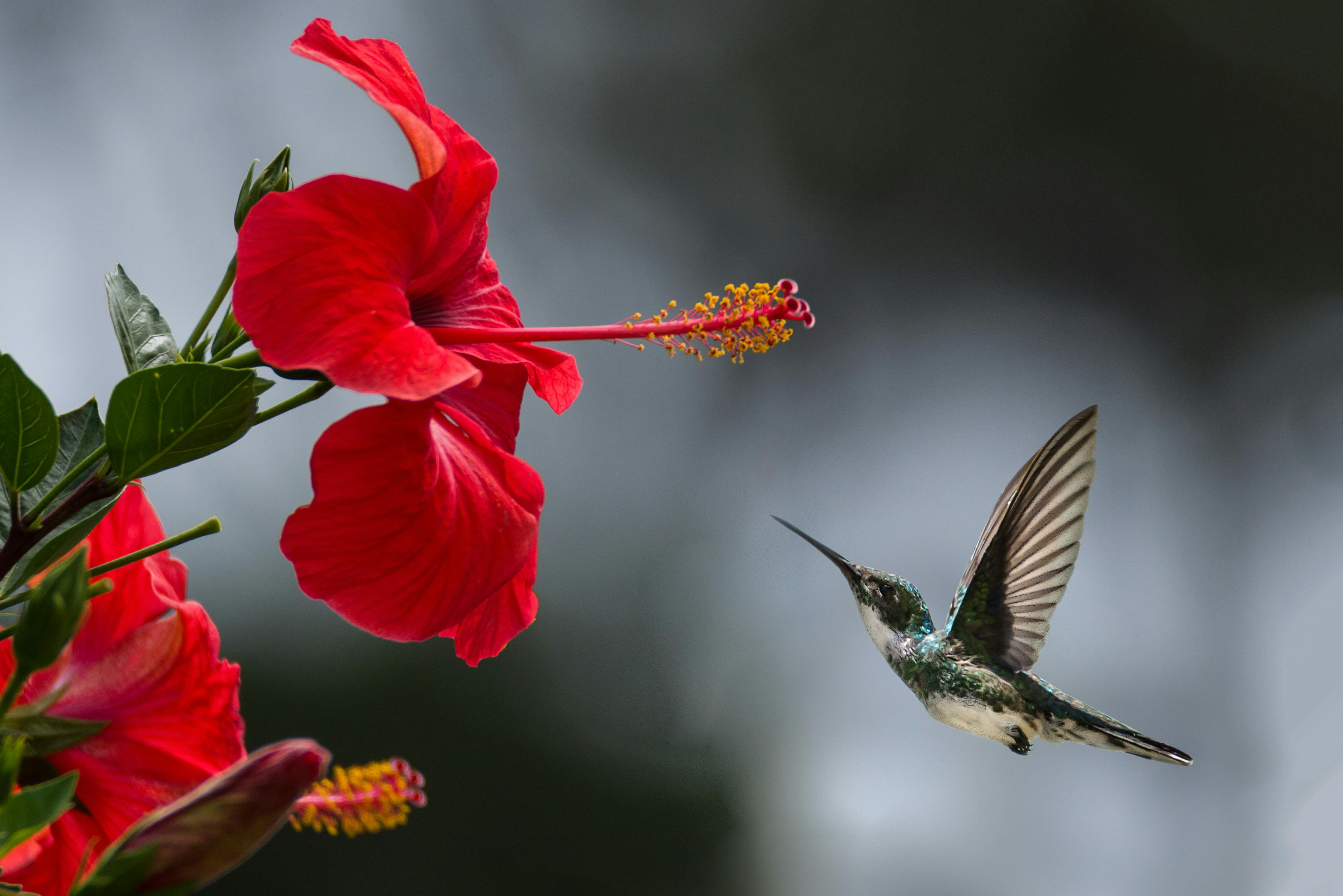 |
| Hibiscus Flower |
Hibiscus is a tropical plant that is loved for its bright and colorful flowers. The hibiscus flowers come in a wide range of colors such as red, pink, yellow, white, and orange. In many cultures, hibiscus is seen as a symbol of femininity, love, and delicate beauty.
To grow hibiscus at home, it is best to plant them in a spot that gets at least 6 hours of direct sunlight every day. They prefer well-draining soil that is kept consistently moist but not waterlogged. Hibiscus plants also benefit from regular fertilization during the growing season.
It is important to note that hibiscus plants are susceptible to pests and diseases, so it is crucial to keep an eye out for any signs of damage or illness. If you notice any issues, it is best to address them promptly to prevent the spread of the problem.
In conclusion, the hibiscus is a stunning flowering plant that can add a touch of tropical beauty to any home or garden. With the right care and attention, it can thrive and provide a burst of color for years to come.
4. Geraniums
 |
| Geraniums Flower |
Geraniums are a popular flowering plant that come in a variety of shapes, sizes, and colors. They are often used in gardens and hanging baskets to add a splash of color to outdoor spaces. Geraniums are also great for indoor planting, with their attractive foliage and beautiful blooms.
Geraniums come in a range of colors including pink, red, white, and purple, and they typically bloom from spring through fall. They are a hardy plant that can tolerate a variety of conditions, but they prefer well-draining soil and plenty of sunlight.
To care for geraniums at home, it's important to keep the soil moist but not waterlogged. Regular deadheading (removing spent blooms) will encourage the plant to produce more flowers. Geraniums are also susceptible to pests like aphids and spider mites, so it's important to keep an eye out for any signs of infestation and treat them promptly.
Overall, geraniums are a low-maintenance and beautiful flowering plant that can add a touch of color to any home or garden. With proper care and attention, they will reward you with blooms throughout the growing season.
5. Sunflower
 |
| Sunflowers Flower |
Sunflowers are tall, vibrant plants that are native to North and South America. They are well-known for their large, showy flower heads that can range in color from bright yellow to deep red or even bi-colored. The sunflower is often associated with positivity, happiness, and energy, making it a popular choice for bouquets and garden beds alike.
To grow sunflowers at home, choose a sunny spot in your garden or on your balcony. Sunflowers need at least six hours of direct sunlight each day. They prefer well-draining soil and regular watering, but be careful not to overwater as this can lead to root rot. When planting sunflower seeds, be sure to sow them directly into the ground as they do not like to be transplanted.
Once your sunflowers begin to bloom, you can cut the flowers and bring them indoors to enjoy. Sunflowers also make great gifts and can brighten up any room. With proper care and attention, you can enjoy the beauty of sunflowers in your home or garden for years to come.
6. Lavender
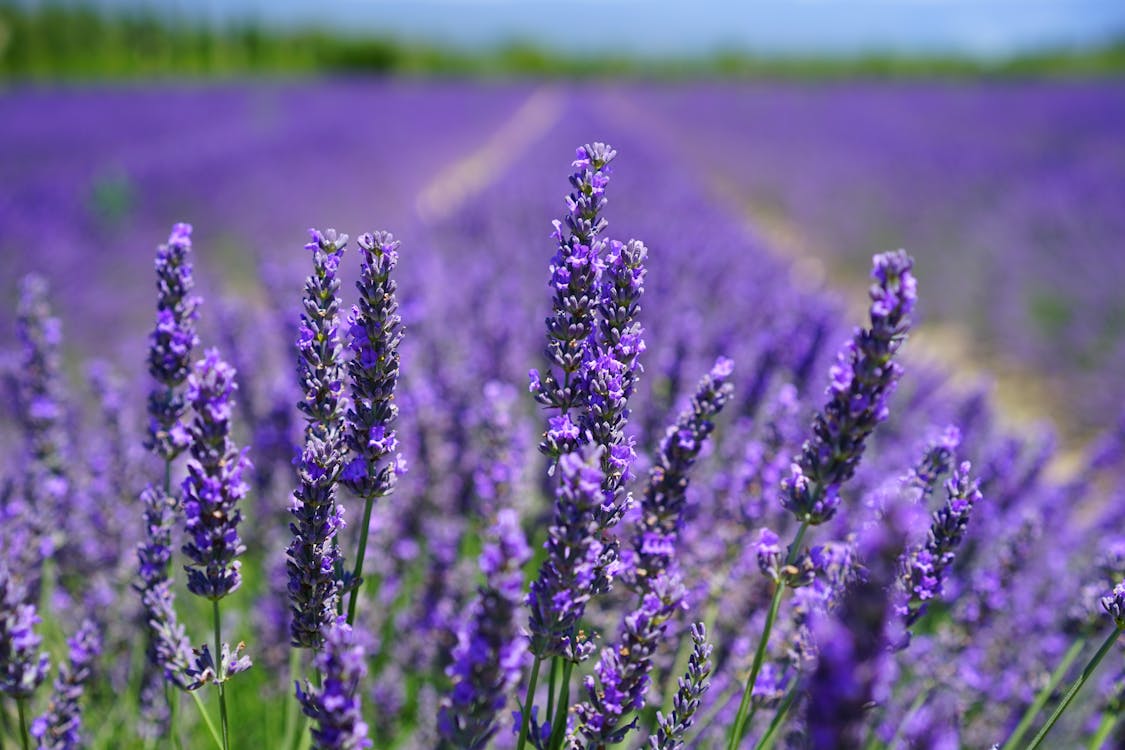 |
| Lavender Flower |
Lavender is a popular flowering plant that is known for its beautiful, fragrant purple flowers. This plant is not only aesthetically pleasing, but it also has a number of health benefits. Lavender is commonly used in aromatherapy and is believed to help reduce stress and anxiety.
Lavender comes in a variety of colors, ranging from light purple to dark purple. In addition to its beauty and aroma, lavender also has a number of symbolic meanings. It is often associated with purity, devotion, and serenity.
To grow lavender at home, it is important to choose a sunny location with well-draining soil. Lavender requires good drainage to prevent root rot, so make sure the soil is not too wet. It is also important to prune the plant regularly to promote healthy growth.
When caring for lavender, it is important to avoid over-watering. Water the plant deeply once a week, but do not allow the soil to become waterlogged. Lavender also benefits from occasional fertilization with a balanced fertilizer.
Overall, lavender is a beautiful and beneficial plant that is easy to care for and can provide a lovely addition to any garden or home.
7. Daffodil
 |
| Daffodil Flower |
Daffodil, also known as Narcissus, is a beautiful flowering plant that typically blooms in the spring. This plant is well-known for its bright yellow flowers and trumpet-shaped blooms, although there are also varieties with white, orange, and pink flowers. Daffodils symbolize new beginnings, rebirth, and friendship, making them a popular choice for spring weddings and other special occasions.
To grow daffodils at home, it's best to plant them in the fall so they can establish their roots before the winter. Choose a spot with well-draining soil and partial to full sunlight. Plant the bulbs about 4-6 inches deep and 4-6 inches apart. Water them well after planting and then let the soil dry out before watering again.
Daffodils don't require much maintenance but do benefit from occasional fertilization with a balanced fertilizer. After the flowers have bloomed, leave the foliage intact until it withers and turns yellow, as this is when the bulb is storing energy for the next year's growth.
8. Chrysanthemum
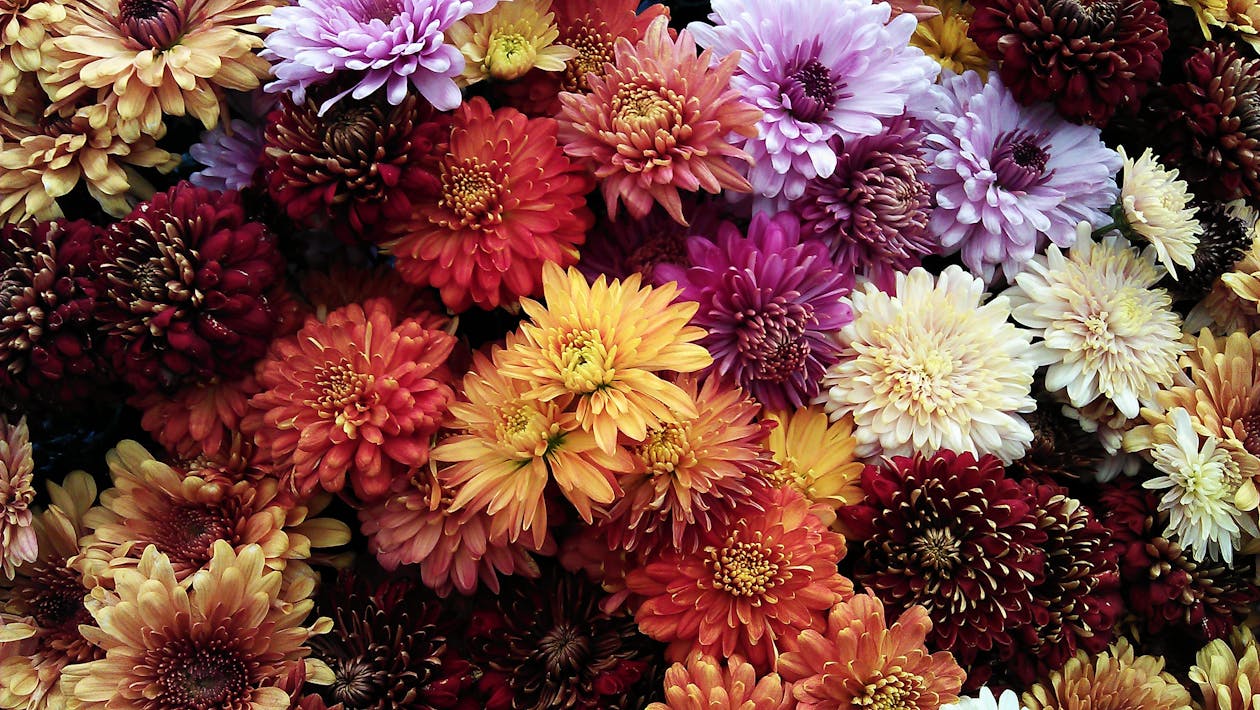 |
| Chrysanthemums Flower |
Chrysanthemums, also known as mums, are popular flowering plants that come in a variety of colors and shapes. They are native to Asia and northeastern Europe and have been cultivated for thousands of years.
Chrysanthemums come in a wide range of colors, including white, yellow, pink, red, and purple, and are often used in fall flower arrangements. In many cultures, chrysanthemums are considered a symbol of longevity, happiness, and good luck.
To care for chrysanthemums, it's important to plant them in well-draining soil with plenty of sunlight. They also require regular watering and fertilization. Pinching the plant's tips when they are about six inches tall can encourage bushy growth and more blooms.
Overall, chrysanthemums are a beautiful addition to any garden or indoor space and can bring a pop of color and joy to your life.
9. Tulip
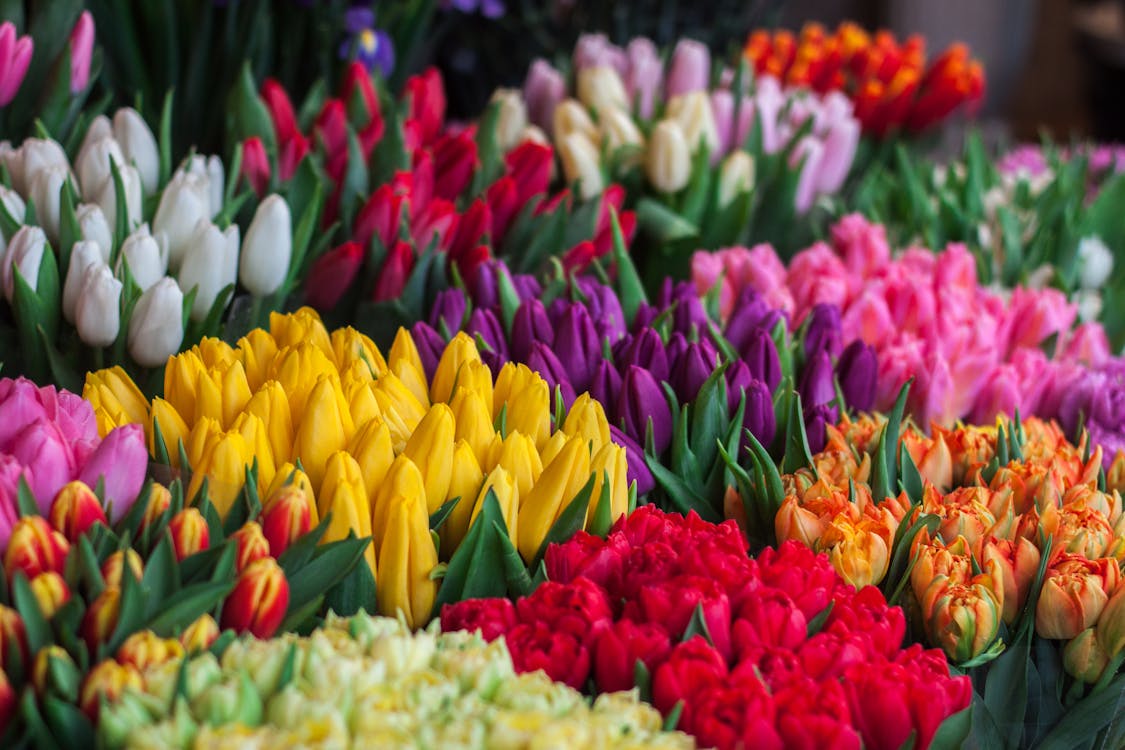 |
| Tulips Flower |
Tulips are another popular and beautiful flowering plant that comes in a variety of colors and shapes. They are a symbol of perfect love and are often associated with the Netherlands. Tulips come in different types, including early, mid, and late-blooming tulips, as well as fringed, double, and parrot tulips.
To grow tulips at home, plant the bulbs in well-drained soil in the fall, at a depth of about six inches. They need a period of cold to develop, so make sure to plant them before the first frost. Water them regularly and keep them in a sunny location. After the flowers have bloomed, allow the foliage to die back naturally before cutting it back.
In summary, tulips are a beautiful and meaningful flowering plant that can brighten up any garden or home. By following some simple care tips, you can enjoy these stunning flowers year after year.
10. Marigolds
 |
| Marigolds Flowers |
Marigolds are a popular annual flowering plant known for their bright colors and hardiness. They are native to Mexico and Central America but are now grown all over the world. Marigolds come in a variety of colors, including orange, yellow, and red, and they are often used for decorative purposes in gardens, borders, and containers.
In many cultures, marigolds are associated with good luck, love, and even protection from evil spirits. They are also believed to have healing properties and are sometimes used in herbal medicine.
To grow marigolds at home, start by selecting a sunny location with well-draining soil. Marigolds prefer warm weather and can be started from seed or purchased as seedlings. Plant them in the spring or early summer, and make sure to water them regularly but avoid over-watering. Deadheading, or removing spent blooms, can encourage the plant to produce more flowers.
Overall, marigolds are an easy-to-care-for flowering plant that can add a pop of color and charm to any garden or indoor space.
In conclusion, flowering plants offer many benefits to our homes and lives. From adding color and beauty to purifying the air and boosting our mood, there are many reasons to incorporate these plants into our indoor and outdoor spaces. The top 10 flowering plants discussed in this article - rose, orchid, hibiscus, geranium, sunflower, lavender, daffodil, chrysanthemum, tulip, and marigold - offer a range of colors, meanings, and care requirements.
By choosing the right flowering plants and providing them with the right care, we can enjoy their beauty and benefits for years to come. So why not add a few of these plants to your home today?
Thanks for reading and happy planting!
Keywords: flowering plants, home decor, roses, orchids, hibiscus,
sunflowers, lavender, gerbera daisies, peonies, tulips, gardenias.
